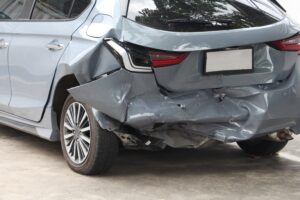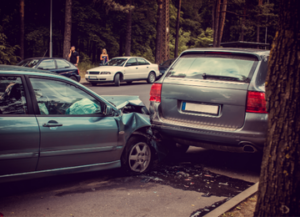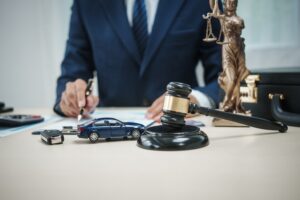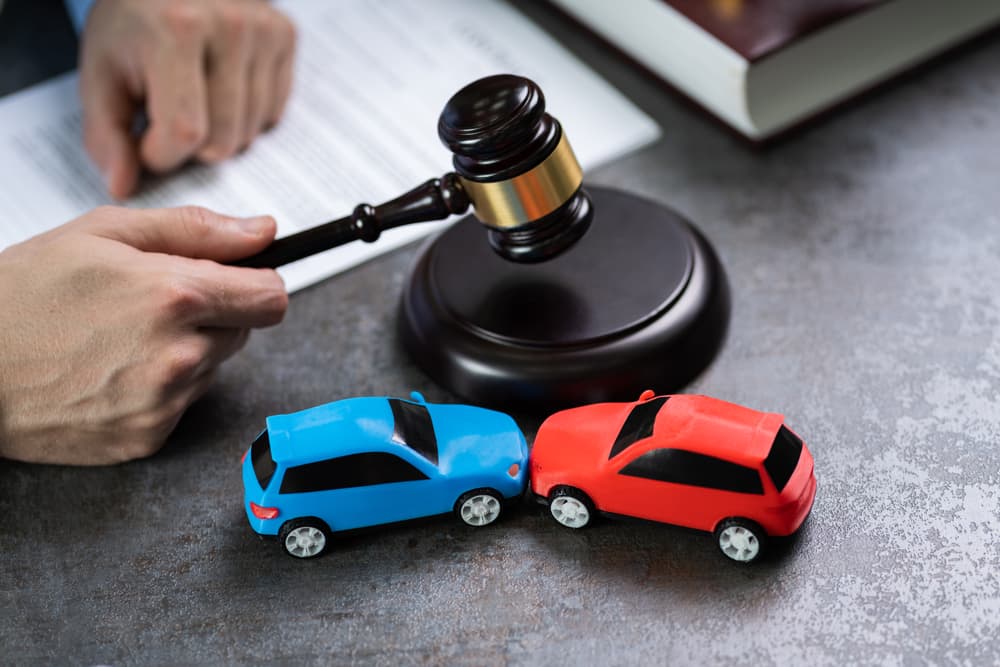Getting into a car accident in West Virginia can leave you dealing with pain, missed work, and uncertainty about what comes next. When you believe you might share some responsibility, you may wonder: What if I am partly to blame for my car accident? That’s a common concern among injured drivers and passengers who want to know whether they can still recover financial compensation for their losses.
West Virginia law allows for shared responsibility in many cases. The outcome often depends on how much fault each party bears. A car accident lawyer can help ensure that insurance companies don’t unfairly increase your share of the blame.
If you were injured in a crash, you can contact a car accident attorney near you for a free consultation to discuss your options and protect your right to pursue compensation.
Schedule a free case evaluation
Key Takeaways: Sharing Blame in WV Car Accidents
- West Virginia follows a modified comparative negligence rule, allowing you to recover damages if you’re less than 50% at fault for the accident
- Your compensation will be reduced by your percentage of fault, so a determination of 20% fault means you receive 80% of your total damages
- Insurance companies often try to shift more blame onto accident victims to reduce their payout obligations
- Common scenarios of shared fault include distracted driving, failure to maintain lane position, and not following at a safe distance
- Even if you think you share some responsibility, you should still consult with an attorney to protect your rights and maximize your recovery
What Is Comparative Negligence in West Virginia?
 West Virginia uses what’s called a modified comparative negligence rule. This means you can still pursue damages even if you share some of the fault for the crash, as long as your fault is less than 50%. Once your percentage of responsibility reaches 50% or higher, you can’t recover damages from the other party.
West Virginia uses what’s called a modified comparative negligence rule. This means you can still pursue damages even if you share some of the fault for the crash, as long as your fault is less than 50%. Once your percentage of responsibility reaches 50% or higher, you can’t recover damages from the other party.
How Fault Percentage Affects Your Compensation
Your total recovery is reduced by your level of fault. For example, if you’re found 20% at fault and your total damages are $100,000, you could still receive $80,000. This reduction reflects your contribution to the accident.
The 50% Bar Rule Explained
The 50% bar means that if your share of fault reaches or exceeds half of the total responsibility, you lose the ability to recover damages. This system aims to balance accountability while allowing injured individuals to still seek compensation when another driver’s negligence played the greater role.
Can I Still Recover Damages If I Was Partially at Fault?
Many accident victims mistakenly assume that sharing any blame automatically prevents recovery. West Virginia’s system, however, provides a fairer approach.
When You Can Recover Compensation
You can still pursue damages when your share of responsibility is below 50%. This allows drivers who made minor mistakes to still hold the other party accountable for their greater negligence.
When You Cannot Recover Compensation
If you’re found equally or more responsible than the other party, state law prevents recovery. This applies whether the other driver was careless, distracted, or speeding if your own conduct contributed at least 50%.
Examples of Shared Fault Scenarios in West Virginia
- Distracted driving: Both drivers may share blame if one driver was texting and the other failed to yield.
- Speeding and sudden stops: One driver’s excessive speed and another’s abrupt braking could lead to shared fault.
- Improper lane changes: When both drivers fail to signal or check blind spots, each may bear part of the blame.
- Driving in poor weather: When drivers fail to adjust for rain or snow, both can share responsibility for the crash.
How Is Fault Determined in a Car Accident Case?
Determining fault involves a careful review of the facts and evidence surrounding the crash. Insurers, investigators, and attorneys all play roles in assessing how the collision occurred.
Evidence Used to Establish Fault
Investigators use various types of evidence to show who caused the accident.
- Police reports: These documents contain the responding officer’s observations, statements from drivers, and sometimes indicate who was likely at fault.
- Photos and videos: Images from the scene can show vehicle positions, damage patterns, and skid marks that reveal how the crash happened.
- Medical records: The type and timing of injuries can also provide clues about impact direction and severity.
The Role of Police Reports
A police report often serves as an initial summary of the crash. While not final proof of fault, insurers frequently rely on it during their investigations. Your attorney can review this report for errors or incomplete details that could unfairly affect your share of blame.
Witness Statements and Their Impact
Witnesses help paint an objective picture of what happened. Their accounts can confirm whether one driver ran a red light, followed too closely, or ignored traffic signals.
Accident Reconstruction Analysis
When disputes arise, accident reconstruction experts use physics, vehicle data, and measurements to recreate the collision. Their analysis helps establish how fast each driver was going and whether actions taken before impact contributed to the crash.
Common Situations Where Fault May Be Shared
Many West Virginia crashes involve circumstances where multiple drivers made mistakes. Recognizing these helps you understand how shared fault works.
Rear-End Collisions with Sudden Stops
Rear-end crashes often seem straightforward, but if the front driver stopped suddenly without cause or had broken brake lights, both parties might share fault.
Intersection Accidents and Right-of-Way Violations
At intersections, confusion about who had the right of way can lead to shared responsibility. One driver might run a red light while another entered the intersection too soon.
Lane Change and Merging Accidents
Drivers merging onto highways or changing lanes without signaling often share fault when both fail to maintain awareness of surrounding traffic.
Left-Turn Accidents
Left-turn crashes frequently involve shared fault when one driver turns without yielding, but the oncoming driver was speeding or distracted.
How Insurance Companies Handle Shared Fault Claims
Insurance companies often try to limit what they pay by assigning more fault to the injured person. Understanding how they operate can protect you from unfair blame.
Tactics Insurance Adjusters Use to Increase Your Fault Percentage
Adjusters may claim your statements imply you admitted responsibility. They might downplay the other driver’s actions or interpret events in a way that increases your share of fault.
Why You Should Never Admit Fault at the Scene
Apologizing or guessing about what happened can later be used against you. Even polite statements like “I didn’t see you” might sound like an admission. Let the investigation determine fault based on facts.
Recorded Statements and How They Can Hurt Your Case
Insurers sometimes request recorded interviews, saying it helps process your claim faster. In reality, these recordings can be used to shift blame. Always consult your attorney before providing any official statement to an insurance adjuster.
What Damages Can I Recover in a Shared Fault Case?
 Even when partially responsible, you may still recover damages depending on your percentage of fault.
Even when partially responsible, you may still recover damages depending on your percentage of fault.
Economic Damages
These cover measurable financial losses.
- Medical expenses: Hospital bills, therapy, medication, and ongoing care costs.
- Lost wages: Income missed while you recover from injuries.
- Property damage: Repair or replacement of your vehicle and other damaged belongings.
Non-Economic Damages
These address how the accident affected your quality of life.
- Pain and suffering: Physical discomfort and distress caused by injuries.
- Loss of enjoyment: Activities or hobbies you can no longer participate in.
- Emotional distress: Mental and emotional strain that affects daily life.
How Your Fault Percentage Reduces Your Recovery
If you’re 25% responsible and your total damages equal $80,000, you’d receive $60,000. This proportional approach encourages fairness while still allowing recovery when another driver’s negligence was greater.
How Our Attorneys Can Help
The lawyers at Robinette Legal Group, PLLC, work to protect injured clients from unfair fault claims and insurance tactics. Our team builds strong cases to show how another driver’s actions caused your injuries and losses.
Investigating Your Accident Thoroughly
A detailed investigation forms the foundation of a strong claim. Our team begins by reviewing every detail surrounding the crash.
- We collect police reports, photos, and videos from the accident scene.
- We contact witnesses to confirm what they saw.
- We review weather and road conditions that may have contributed to the collision.
- When needed, we work with accident reconstruction specialists to determine how each vehicle moved and who failed to follow traffic laws.
This process helps reveal what really happened rather than relying on incomplete or biased insurance assessments.
Gathering Evidence to Minimize Your Fault Percentage
Every small piece of proof can make a big difference when insurers try to increase your share of blame. Our attorneys identify evidence that shows the other driver’s negligence caused or contributed to the crash.
- We examine vehicle data, such as black box information, to confirm speed or braking patterns.
- We look at phone records if distracted driving may have played a role.
- We obtain surveillance or traffic camera footage that supports your version of events.
- We consult with medical experts to connect your injuries directly to the crash.
By carefully organizing this evidence, we make it more difficult for insurers to shift blame unfairly onto you.
Negotiating with Insurance Companies
Insurance companies often aim to reduce payouts by undervaluing injuries or exaggerating fault percentages. Our attorneys handle all negotiations to prevent adjusters from using tactics that could harm your claim.
- We present strong documentation that supports your damages.
- We challenge low settlement offers with factual evidence and legal precedent.
- We communicate clearly and firmly so insurers can’t take advantage of your situation.
Our goal is to ensure your losses are recognized and addressed through a fair settlement that reflects the true impact of the crash on your life.
Calculating Your Full Damages
We document all financial and personal losses so that your claim reflects the full extent of the harm you’ve experienced. This includes expenses you’ve already incurred as well as future expenses you will likely incur, such as ongoing medical care and loss of future earnings.
Taking Your Case to Trial When Necessary
If the insurer refuses to make a fair offer, our attorneys prepare to take your case to court. A well-prepared trial strategy can often lead to better settlement discussions.
Frequently Asked Questions About Sharing Blame for a Car Accident
What if the other driver says the accident was my fault?
Drivers often point fingers after a crash. Fault is decided through investigation and evidence, not personal opinions. Your attorney can collect proof that clarifies who caused the collision.
Does my insurance rate go up if I’m partially at fault?
Insurance companies may adjust your rates if they determine you were partly responsible. The amount depends on your policy and the insurer’s internal rating rules.
How long do I have to file a claim in West Virginia if I share fault?
You generally have two years from the date of the accident to file a personal injury claim. Missing this deadline means losing your right to seek compensation.
Will apologizing at the accident scene be used against me?
Yes, an apology may be interpreted as admitting fault. Even if you’re just being polite, insurance companies might use it as evidence to increase your fault percentage.
Can the fault determination change during my case?
Yes. As new evidence emerges, the assigned percentages can shift. Witness statements, expert analysis, or traffic video can all alter how fault is viewed.
Let Our Car Accident Lawyers in WV Help
 Personal injury claims in West Virginia have strict time limits, so taking prompt action helps protect your rights. The attorneys at Robinette Legal Group, PLLC, have extensive experience handling car accident cases where fault is disputed. We work to build strong claims that show how another driver’s negligence led to your injuries.
Personal injury claims in West Virginia have strict time limits, so taking prompt action helps protect your rights. The attorneys at Robinette Legal Group, PLLC, have extensive experience handling car accident cases where fault is disputed. We work to build strong claims that show how another driver’s negligence led to your injuries.
If you were injured in a crash and believe you might share some responsibility, you don’t have to face the insurance company alone. Contact our team for a free, no-obligation consultation to discuss your situation and learn how we can help you pursue fair compensation for your losses.
Schedule a free case evaluation
Jeffery Robinette was admitted to practice law in 1991 and is licensed in all levels of state and federal trial courts in West Virginia. Mr. Robinette is also licensed in all state and federal appeals courts in West Virginia and the United States Supreme Court. As a National Board Certified Trial Attorney who has handled hundreds of motor vehicle, injury, and construction defect claims and a leading author on insurance claims settlement issues and difficulties in West Virginia, Jeff Robinette is uniquely qualified to represent your best interest.





